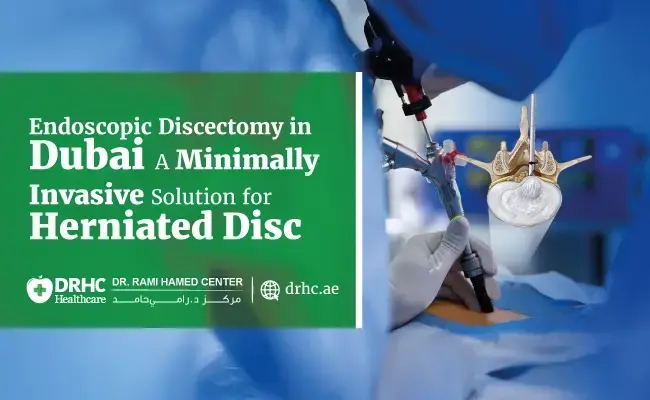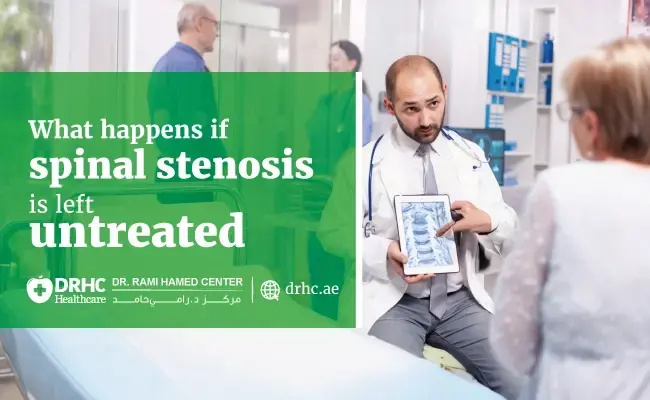
Living with persistent knee pain—especially pain just below the kneecap—can be both frustrating and limiting. If you’ve been diagnosed with Jumper’s Knee (patellar tendinopathy) and conservative treatments like rest, physiotherapy, or injections haven’t worked, your doctor may recommend a procedure called arthroscopic patellar tendon debridement.
At the Dr. Rami Hamed Center (DRHC) in Dubai, we understand that surgery can feel like a big step. This blog is designed to walk you through the procedure in a clear, compassionate, and reassuring way—so you know what to expect and feel confident in your care.
What Is Arthroscopic Patellar Tendon Debridement?
Arthroscopic patellar tendon debridement is a minimally invasive surgery used to treat chronic Jumper’s Knee that doesn’t respond to non-surgical treatments. The goal of the procedure is to:
- Remove degenerated or scarred tendon tissue
- Encourage natural healing
- Restore knee function and reduce pain
Using a tiny camera and specialized tools, the surgeon accesses the patellar tendon through small incisions, allowing for precise treatment with minimal disruption to healthy tissue.
Why Is This Procedure Needed?
In Jumper’s Knee, tiny tears in the patellar tendon (which connects the kneecap to the shinbone) may fail to heal properly over time. Instead of repairing, the tendon tissue becomes weakened, inflamed, and scarred, which causes ongoing pain during activities like jumping, squatting, or climbing stairs.
If rest, physiotherapy, medication, and regenerative treatments (like PRP injections) haven’t helped after several months, tendon debridement may be the best next step.
Step-by-Step: What Happens During the Procedure?
At DRHC Dubai, your surgical experience is carefully planned to prioritize your safety, comfort, and recovery. Here's what typically happens:
1. Pre-Surgery Preparation
Before surgery:
- You’ll undergo a detailed evaluation including physical exams and imaging (like MRI or ultrasound).
- Your doctor will explain the procedure, discuss any questions or concerns, and help you prepare (e.g., fasting guidelines, and medication adjustments).
- You’ll be given either general or spinal anesthesia so that you remain comfortable during the procedure.
2. The Arthroscopic Procedure
Once in the operating room:
- Small incisions (about 0.5–1 cm) are made around the knee.
- A tiny camera (arthroscope) is inserted to guide the surgeon’s view inside the joint.
- The surgeon identifies and removes the damaged areas of the patellar tendon using fine surgical instruments.
- Healthy surrounding tissue is left untouched, and the area is cleaned to promote healing.
- The incisions are closed with dissolvable sutures or surgical tape.
The procedure usually takes 30 to 60 minutes, and you can return home the same day.
What to Expect After Surgery
We know that recovery is often one of the biggest concerns. At DRHC Dubai, your aftercare plan is designed to support healing while helping you return to normal activity safely and confidently.
Immediate Post-Op Care
- You’ll rest in the recovery area for a short time, then be discharged with instructions.
- Mild pain, swelling, or stiffness may occur but is usually manageable with medication and cold therapy.
- Crutches or a knee brace may be recommended for a few days to offload the tendon.
Rehabilitation and Recovery Timeline
- Week 1–2: Focus on reducing swelling and maintaining gentle mobility.
- Week 3–6: Start physiotherapy with guided stretching and strengthening exercises.
- Week 6 and beyond: Progress to sport-specific or job-related movement as tolerated.
Most patients return to daily activities in 4–6 weeks, and to sports or high-demand tasks in 3–4 months, depending on healing and rehabilitation progress.
Our Related Blogs:
- What Is Jumper's Knee? Symptoms, Causes, and Diagnosis
- Jumper's Knee vs. Runner's Knee. What's the Difference?
- Why Athletes Are Prone to Jumper's Knee: Risk Factors Explained
- Stages of Jumper's Knee: From Mild to Severe Tendinopathy
- Is Jumper's Knee a Career-Ending Injury? What You Need to Know?
- How is Jumper's Knee Treated? Conservative to Surgical Options
- When Does Jumper's Knee Require Arthroscopic Surgery?
- Understanding Arthroscopic Surgery for Jumper's Knee: A Step-by-Step Guide
Common FAQs
Is the procedure painful?
The surgery itself is pain-free due to anesthesia. Some discomfort afterward is normal, but well-controlled with medication and ice therapy.
Will I need to stay in the hospital?
No. This is a day surgery at DRHC Dubai—you’ll go home the same day.
Are there risks?
As with any surgical procedure, there’s a small risk of infection, stiffness, or delayed healing. However, arthroscopic techniques are low-risk and have a strong track record of success.
Can I avoid surgery with more physiotherapy?
Surgery is typically recommended only after 3–6 months of failed conservative treatment. If you've already tried physiotherapy and other non-surgical methods, tendon debridement may offer long-term relief.
Is Arthroscopic Debridement Right for You?
This procedure is most appropriate for people who:
- Have chronic Jumper’s Knee lasting longer than 6 months
- Have tried physical therapy and injections without improvement
- Experience pain that limits work, sports, or daily activities
- Show signs of tendon degeneration on imaging
If this sounds like your situation, it may be time to consider a surgical consultation.
Compassionate Care at DRHC Dubai
At the Dr. Rami Hamed Center, your health and peace of mind come first. We combine modern medical expertise with a patient-centered approach—so that even something as complex as surgery feels understandable and manageable.
If you’re living with persistent knee pain from Jumper’s Knee, and conservative treatments haven't brought the relief you need, arthroscopic patellar tendon debridement could be the next step toward healing.
Book a consultation at DRHC Dubai today, and let’s explore the safest, most effective path forward—together.
Dr. Rami Hamed
Consultant Spine & Orthopedic Surgeon
Founder, DRHC – Dubai Healthcare City
📞 +971 4 279 8800
🌐 www.drhc.ae
📍 Dubai Healthcare City, Building 52
Topic: orthopedic Knee




.jpg)




Leave a comment